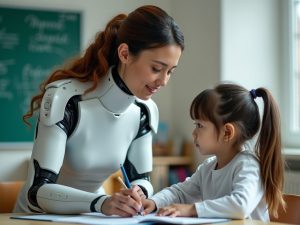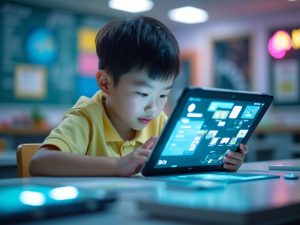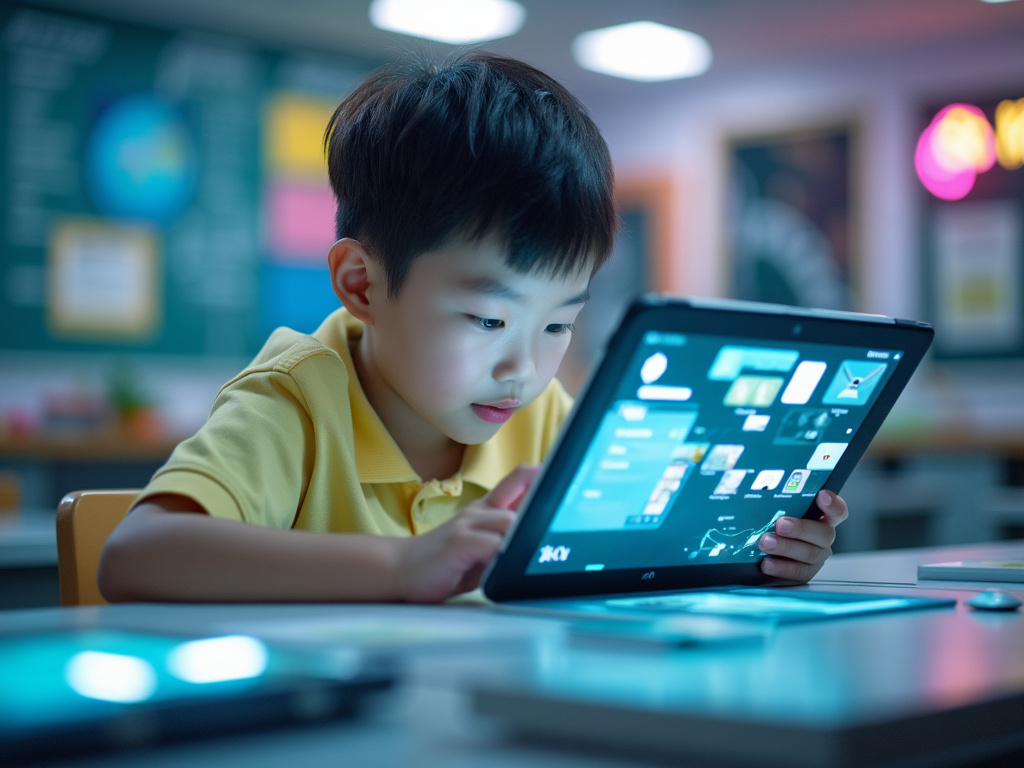In a bold move that has ignited debate across the globe, South Korea is set to revolutionize its education system with the introduction of AI-powered textbooks. This initiative, slated to begin in 2025, promises to transform the learning experience for millions of students. But as with any significant technological shift, particularly one involving children’s education, it has sparked both excitement and concern. Let’s delve into the details of this groundbreaking program and explore its potential impacts on students, teachers, and the future of education.
The Dawn of a New Era in South Korean Education
South Korea has long been renowned for its rigorous and competitive education system. However, recognizing the need to foster creativity, critical thinking, and digital literacy among students, the government has embarked on an ambitious plan to integrate AI technology into the heart of the learning process: textbooks.
Starting in 2025, South Korean schools will begin phasing in AI-powered digital textbooks, with the goal of full integration across all grades and subjects by 2028. This gradual rollout is designed to manage the transition’s impact and allow for ongoing feedback and adjustments.
The Promise of AI-Powered Learning
The new digital textbooks aren’t just traditional texts in electronic format. They represent a leap into the future of education, offering a range of innovative features:
- Personalized Learning Paths: These textbooks will adapt to each student’s pace and learning style, potentially revolutionizing the one-size-fits-all approach to education.
- Real-Time Feedback: Students will receive immediate feedback on their work, allowing for quicker course corrections and potentially accelerating the learning process.
- Immersive Experiences: Through the integration of virtual reality, these textbooks could bring abstract concepts to life, making learning more engaging and memorable.
- Diverse Learning Styles: By catering to various learning preferences, these AI-powered tools aim to increase student engagement and improve overall learning outcomes.
Imagine a student struggling with a complex mathematical concept. The AI system could detect this difficulty and adjust the presentation, perhaps offering additional examples, visual aids, or even suggesting a different approach to the problem. This level of customization has the potential to dramatically improve learning outcomes for students across the spectrum of abilities.
Concerns and Criticisms
Despite the promising potential, the initiative has not been without its critics. Parents, educators, and public health experts have raised several concerns:
1. Screen Time and Health Impacts
The shift to digital textbooks inevitably means increased screen time for students. This has led to worries about potential negative impacts on children’s physical health, including eyestrain and posture-related issues. Mental health concerns have also been raised, with some fearing that increased digital interaction could affect social development and emotional well-being.
2. AI Accuracy and Misinformation
While AI has made remarkable strides, it’s not infallible. There are concerns about the potential for AI “hallucinations” – instances where AI generates plausible but incorrect information. In an educational context, such errors could lead to the spread of misinformation, potentially undermining the learning process.
3. Data Privacy
The use of AI in education necessarily involves the collection and analysis of student data. This has sparked debates about data privacy and security. Parents and privacy advocates are questioning how this data will be stored, who will have access to it, and how it might be used beyond the immediate educational context.
4. Cost and Accessibility
Implementing AI-powered textbooks across an entire education system is no small undertaking. There are concerns about the potential costs, both for the government and for families who may need to invest in compatible devices. This raises questions about equitable access to these new educational tools.
The Government’s Response
Aware of these concerns, the South Korean government has been proactive in addressing them:
- They’ve emphasized that the transition will be gradual, allowing time for adjustments and maintaining a balance between digital and traditional learning methods.
- Significant investments are being made in digital infrastructure and teacher training to ensure smooth implementation.
- The government has stressed that the role of teachers will be enhanced, not diminished, by these new tools. The aim is to use AI to support and augment traditional teaching methods, not replace them.
A Nation Divided

The announcement of this initiative has sparked intense debate across South Korean society. Social media platforms like X (formerly Twitter) have been buzzing with discussions, reflecting a mix of excitement about educational innovation and skepticism about potential risks.
A petition opposing the rapid digitalization of education, citing concerns about children’s health, has garnered over 50,000 signatures from parents. Meanwhile, many educators have expressed worries about the long-term effects on child development and the overall quality of education.
Global Implications
South Korea’s bold move is being closely watched by educators and policymakers worldwide. As a country known for its technological prowess and emphasis on education, South Korea’s successes or struggles with this initiative could significantly influence global trends in educational technology.
The initiative raises broader questions about the balance between embracing technological advancements and maintaining traditional educational values. It challenges us to consider how we can harness the power of AI to enhance learning while safeguarding the essential human elements of education.
Looking to the Future
As South Korea embarks on this educational journey, the world watches with a mix of anticipation and caution. The potential for AI-powered textbooks to revolutionize learning is immense, offering personalized, engaging, and efficient educational experiences. However, the concerns raised by parents, educators, and experts cannot be dismissed.
The success of this initiative will likely depend on how well South Korea navigates these challenges, balancing innovation with caution, and technology with human touch. As we move forward, it’s crucial that we engage in ongoing discussions about the role of AI in education, considering both its tremendous potential and its possible pitfalls.
What’s clear is that South Korea’s AI textbook initiative is more than just a national education policy – it’s a glimpse into a possible future of global education. As such, it deserves our attention, our critical thinking, and our participation in the ongoing dialogue about the future of learning in an AI-powered world.
What are your thoughts on AI-powered textbooks? How do you think we can best harness the power of AI in education while addressing the valid concerns raised? Join the conversation and help shape the future of learning.
